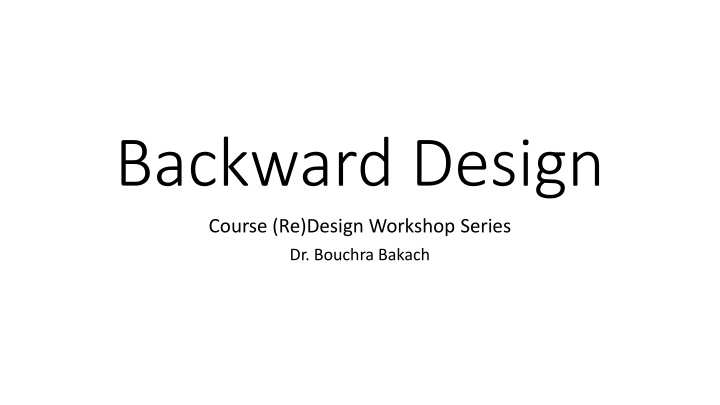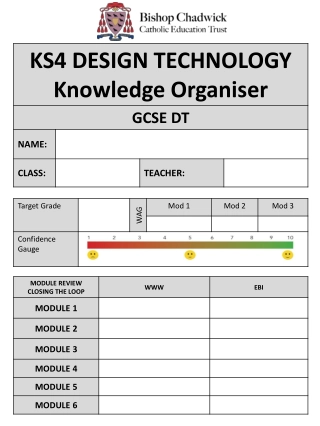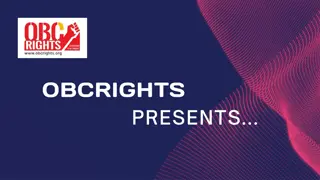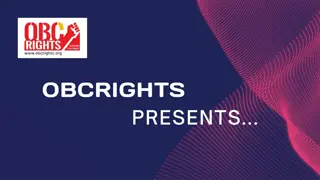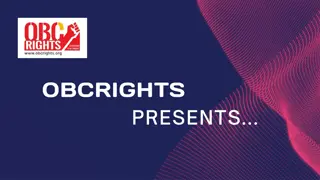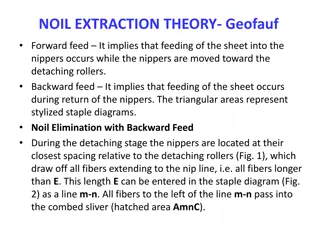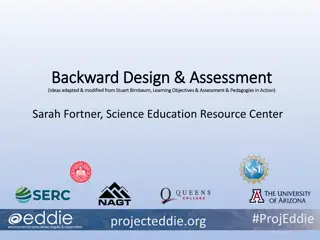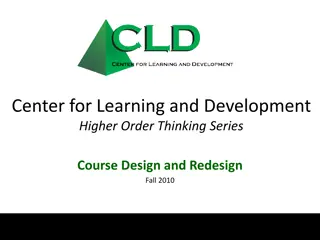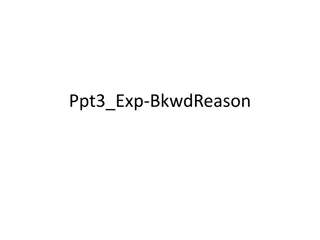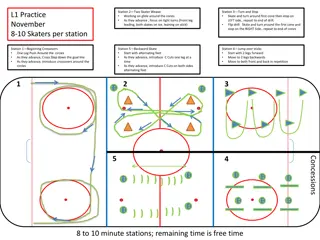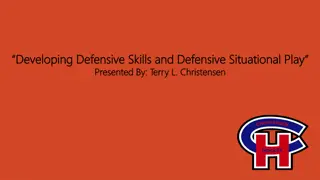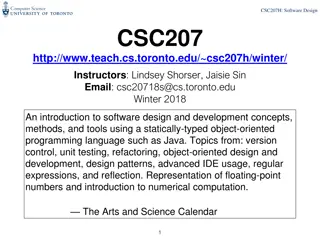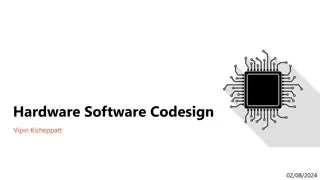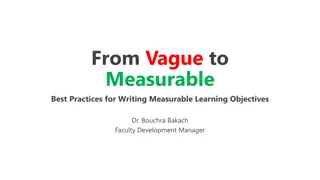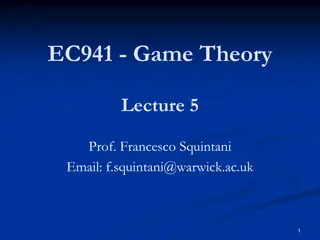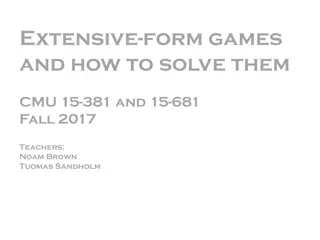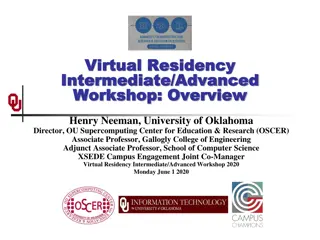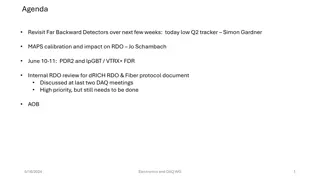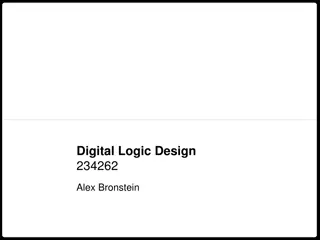Backward Design Course Workshop Series by Dr. Bouchra Bakach
This workshop series focuses on the principles of backward design, distinguishing it from traditional methods, and guiding educators to develop student-centered courses through intentional planning and alignment of objectives, assessments, and learning activities. By shifting focus to students' understanding and application of content, participants will learn to create engaging and effective learning experiences.
Download Presentation

Please find below an Image/Link to download the presentation.
The content on the website is provided AS IS for your information and personal use only. It may not be sold, licensed, or shared on other websites without obtaining consent from the author.If you encounter any issues during the download, it is possible that the publisher has removed the file from their server.
You are allowed to download the files provided on this website for personal or commercial use, subject to the condition that they are used lawfully. All files are the property of their respective owners.
The content on the website is provided AS IS for your information and personal use only. It may not be sold, licensed, or shared on other websites without obtaining consent from the author.
E N D
Presentation Transcript
Backward Design Course (Re)Design Workshop Series Dr. Bouchra Bakach
Workshop Objectives 1 2 3 4 Distinguish Between the Traditional and Backward Design Explain the Benefits of the Backward Design Identify the 3 Steps of the Backward Design Process Use the Backward Design Template
Think about this Scenario! You are asked to teach a new course What steps might you take to design the course? Would you select the textbook first? Would you choose a teaching approach that has served you well in the past, i.e., using lectures, flipped method, ? Would you create first the syllabus then start designing and developing the teaching material?
Typically, We. Does that sound familiar??? Look at the program goals, course description Look for any past syllabi if available Select a textbook, look for reading material Prepare lectures, PPTs, handouts Write HW assignments and exams questions
The Twin Sins of Traditional Design Activity-Focused Instruction Coverage-Focused Instruction
Backward Design Backward Design What do you want students to learn? 1. Identify 1. Identify Desired Results Desired Results 2. Determine 2. Determine Acceptable Acceptable Evidence Evidence How will you know if they ve learned it? 2. Plan Learning 2. Plan Learning Experiences and Experiences and Instruction Instruction What activities will help them learn?
Traditional vs. Backward Course Design Traditional vs. Backward Course Design Goals Assessments Activities Goals Assessments Activities
Primary Goals of Backward Design Shift Thinking From Teacher-Centered to Student-Centered Design. Intentional Course Design and Lesson Planning Alignment Between Learning Objectives, Assessment and Learning activities/Material. Focus on Students' Understanding and Their Ability to Use the Stuff, Not Just Learn the Stuff. Easy Course File Submission at the End of Semester.
Stage 1: Stage 1: Identify Desired Identify Desired Results Results Handout 1
Outcomes Priorities important knowledge (facts, concepts and principles) and skills (processes, strategies and methods) Things we want student to hear, read, view, encounter, research or otherwise encounter Broad- Brush knowledge Student learning is incomplete if the unit or course completed without the mastery of these essentials Nice to know Example: Important to Know and do understandings that will anchor the unit or course Big Ideas And Enduring Understanding the important understandings, that we want students to get inside of and retain after they ve forgotten many of the details Example: Example:
Four Categories of Desired Results Established Goals What relevant goals (e.g., established program and course student learning outcomes, accreditation standards, etc.) will this unit address? 01 Enduring Understanding What are the knowledge, ideas and skills you would like students to remember or do, well beyond your course? 02 Essential Questions What are the open-ended provocative questions I should design to guide student inquiry and focus on uncovering big ideas? 03 Knowledge and Skills 04 What are the discrete objectives students are to know and be able to do.
Course Title: Introduction to International Business Learning Module: Module 2 Teaching modality: face-to-face Semester/Year: Fall 2023 Stage 1 Desired Results Established Goal(s): Program outcome 2: Conduct an environmental scan to evaluate the impact of world issues on an organization s international business opportunities. Standard 9.3.12.BM MGT.3- Apply economic concepts fundamental to global business operations. Standard 9.3.12.BM MGT.4- Employ and manage techniques, strategies and systems to enhance business relationships.
Stage 2: Stage 2: Determine Determine Acceptable Acceptable Evidence Evidence
What is sufficient and telling evidence of understanding? Stage 2 Guiding Questions What performance tasks should anchor the focus of the unit? What criteria will be used to assess the work? Will the assessment reveal and distinguish those who really understand and those who only seem to understand?
Steps to Determine Assessments 1. Select a learning outcome. 2. Using a Taxonomy, identify the level of thinking or cognition required by the learning outcome. (Handout: Blooms Taxonomy) 3. Identify the type of assessments you could use.
Example Students will be able to interpret how international business and internationalization has influenced our global economy Cognitive Level of Learning Outcome Assessment Types Application Discussion board post E-portfolio Lab reports One-minute paper Presentation Case study Problem-solving tasks Short answers Tests .
Stage 3: Stage 3: Plan Learning Plan Learning Experiences and Experiences and Instruction Instruction
Stage 3 Guiding Questions What enabling knowledge (facts, concepts, principles) and skills (processes, procedures, strategies) will students need in order to perform effectively and achieve desired results? How will progress be monitored? What activities, experiences, and lessons will lead to achievement of the desired results and success at the assessments? How will the unit be sequenced and differentiated to optimize achievement for all learners? How will the learning plan help students achieve transfer, and meaning and acquisition, with increasing independence? Are the learning events in Stage 3 aligned with Stage 1 goals and Stage 2 assessments?
Additional Subtasks Identify additional course components that needs to be added to the course in order to facilitate the learning process. For example: a syllabus, course Schedule, Supplemental materials, example of previous students projects, etc. Design course structure by dividing content materials and course components into modules. Design instructional strategies (e.g., lecture notes or lecture notes + video demonstration) Find online resources and materials that could be available for your students in your discipline. These materials may be journal articles, online books, freely available multimedia, tutorials, etc.
Contact Info @ bbakach@alfaisal.edu +966 11 215 7774 BG.085C
Designing Backwards WHY? To eliminate instruction that is activity oriented or coverage oriented Identify desired results Determine acceptable evidence Plan learning experiences/instruction WHAT?
